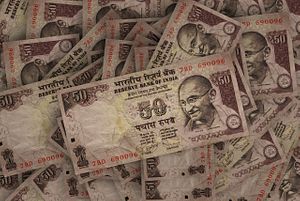As Prime Minister Narendra Modi seeks to reboot India’s slowing economy after clinching a second term in May, he needs to stem a liquidity crisis in India’s so-called shadow banking sector that could stymie efforts this year to get economic growth back on track.
Modi’s election pledges included promises to boost infrastructure spending and financial support for agriculture but, given that he may well may be constrained by a widening fiscal deficit, ensuring non-banking financial companies (NBFCs) remain able to lend is one of his top priorities – particularly since India’s state banks are still mired in a non-performing loan crisis, with some $150 billion of bad loans.
Notwithstanding record levels of foreign direct investment last year, growth slowed to a five-year low of 5.8 percent in the first quarter of 2019, underlining the need for job-creating, output-promoting loan finance. Yet according to India’s Finance Industry Development Council, the industry body for NBFCs, lending by shadow banks – an important source of credit for micro-, small-, and medium-sized businesses – fell by 30 percent in the 12 months to March this year. The credit squeeze has been caused in large part by a loss of confidence in the ability of some of the NBFCs to pay their debts to the state banks and mutual funds that supply them with capital.
There are over 10,000 NBFCs, with a combined balance sheet of around $304 billion. Their willingness to lend to less creditworthy customers, who might struggle to access funds from state banks, has helped to drive the expansion of the Indian economy in recent years. But there are fears that some of the more overleveraged large shadow banks could fail, not only dealing a blow to capital availability for the likes of infrastructure and real estate development and the automotive industry, but also potentially sending tremors through the entire banking system.
Thus far, the car industry has been particularly badly hit by NBFCs’ credit restrictions. This is reportedly seen as the biggest factor in a slump in vehicle sales, with buyers struggling to meet more stringent lending requirements and hard-pressed state banks reluctant to step in.
NBFCs, generally subject to less rigorous regulation than state lenders, came under intense scrutiny last September when one of the biggest shadow banks, Infrastructure Leasing and Financial Services (IL&FS) group, a long-established lender, was struck by several defaults, prompting the government to take control of the institution. The intervention calmed nerves amid talk of “India’s Lehman Brothers moment,” a reference to the collapse of the U.S. banking giant in 2008.
The episode highlighted shadow banks’ vulnerabilities, hiking up their borrowing costs. The sector’s weakness was exposed again in May when Dewan Housing Finance Corp Limited (DHFL), one of the country’s biggest mortgage lenders, missed payments on bonds, prompting two credit-rating agencies to cut their view of its debt to “default” levels. It followed similar downgrades at other NBFCs just a matter of weeks before.
The rise of the country’s shadow banks can be traced to the bad loan troubles that have afflicted the country’s state banks for a number of years. During the 2000s, the latter fueled an investment boom, funding a range of big infrastructure projects. But some of the companies they lent to struggled with repayments. It left the state banks saddled with non-performing loans, limiting their credit provision. In 2017, the government launched a plan to recapitalize these lenders to the tune of $32 billion over two years, and a further $10 billion injection was earmarked in July. Their problems opened the door for the shadow banks, which, over the past three years, have accounted for nearly a third of new loans in India, according to some estimates.
But the increasing prominence of NBFCs masks a flaw in their business model, namely that many have relied on raising short-term finance to fund long-term assets, leaving them vulnerable in economic downturns when it is harder and costlier to secure funding. After the IL&FS debacle and subsequent credit-rating agency downgrades of other NBFCs, the fear is that further defaults will hold back finance for capital-hungry businesses and compound the bad loan problems still bedeviling the state banks – bad news for Modi, whose economic plans are contingent on credit growth.
The authorities are keeping a close eye on the situation. In July the Central Bank governor Shaktikanta Das said “signs of fragility” had been detected in some of the 50 housing finance and other non-bank lenders it had been monitoring. Any failure among the largest of the these might trigger losses comparable to the collapse of a major bank, said the Reserve Bank of India (RBI) in its latest financial stability report. The RBI, however, tempered its unprecedented warning, saying the threat had declined because state banks were now better capitalized.
Nevertheless, in an effort to mitigate default risk, the authorities have taken a number of measures. Interest rates have been lowered several times this year. The RBI is encouraging banks to refinance shadow banks and plans to tighten liquidity requirements for NBFCs. Beyond the banking sector, the government is trying to ease the credit squeeze by reportedly holding talks with foreign lenders to provide as much as $14.5 billion in credit to small firms.
As he continues to wrestle with the state banks’ bad loan tribulations, Modi is keenly aware that an equally serious problem is brewing in the shadow bank sector, which, if it leads to further defaults, could undermine his ambitious economic targets. Given the important role they play in the financial sector, some argue that a thorough reform of NBFCs is long overdue – with a much tougher regulatory environment required to keep their credit flowing.
Yigal Chazan is the head of content at Alaco, a London-based business intelligence consultancy.

































